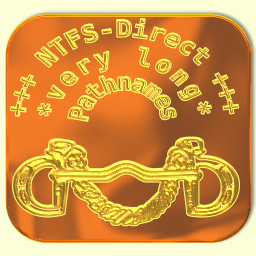MiniRobotLanguage (MRL)
WFF. Command
Wait For File


Intention
This command is useful to make your batch scripts error-tolerant. Using WFF. you can really wait until a file is available and accessible. Or you can use it to wait until a file is really deleted.
This way you can synchronize batch scripts via files.
WFF. can be used in two ways:
1. Wait until a file is available
2. Wait until a file has disappeared
In both cases you can set a "timeout" value, or wait endless. In case you use a Timeout-Value, the timeout-Flag will be set only if that timeout was reached.
You can check the TImeout-Flag using the JIT. or ITO. and such commands.
If you wait for a file, WFF. will also check if the file is accessible. If it can be "opened for read".
If the file is still locked because its not yet "ready", WFF. will not accept the file in case 1 (Wait for a file).
In case 2 (Wait for a file to be deleted), the file must disappear, a locked file does not count as "deleted".
This system makes WFF. a perfect companion for synchronizing Batch-Jobs with compilers and such.
Because it will wait until one task is ready and then start the next.
' Sample Script
VAF.§§FJB=§§FIA\Openfile_lock*.txt
WFF.§§FJB|1
JIT.ero
Syntax
WFF.[P1] [|P2]
' Wait for file
WFF.(Filename)
WFF.(Filename)|Timeout in sec.
' Wait for file being deleted
WFF.<>(Filename)
WFF.<>(Filename)|Timeout in sec.
Parameter Explanation
P1 - File Name
P2 - Timeout in seconds
If you add the "<>" before the filename, WFF. will wait until the file is been deleted.
Example
'*****************************************************
' EXAMPLE 1: WFF/ATF. Append without Newline
' Create a file containing large numbers
' Synchronize two robots using a file.
'*****************************************************
: $$FIL=?desktop\RND.txt
' Run a second robot.
' Note that the second robot knows the value of $$FIL
PRR.
DOL.
PRT.Parallelrobot started, waiting for File ...
WFF.$$FIL
PRT.File existst ... now waiting for the file to be deleted.
WFF.<>$$FIL
PRT.File was removed. Ending ...
PAU.2
GTO.out
OOP.
:out
END.
PRE.
' This is the filename and path on the desktop
: $$FIL=?desktop\RND.txt
FOR.$$AAA|1|20
' Generate a Random Number between 124 and 123125
RND.124,123125,$$REB
' Append the Numbers to the File without Newline
ATF.$$FIL|$$REB|$$ERG
NEX.
DEL.$$FIL
MBX.Ready
END.
'*****************************************************
Remarks
-
Limitations:
-
See also:
• IEF. / NEF. - If - exist - File